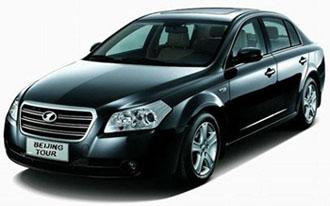[TJPORT 10]
Looking for a reliable and comfortable private
transfer from Tianjin Home Port Xingang to Beijing with a four-day
excursion in the city? Great Wall Adventure Club is here to help. We
have a large fleet of cars and vans with licensed tour guides and
professional drivers. We make sure that your private transfer will be
safe, comfortable and relaxing.
Day 01: Tianjin Port Xingang - Beijing by
car
The Diamond Princess has assisted disembarkation
starting about 07:30am with the last stragglers coming off around
09:00am. So you will leave your ship at a prearranged time. The main
terminal consists of the custom house, luggage area and waiting halls.
Your cruise ship will dock just by the main building.
Taking your handbags, you will go through customs.
Then you go to claim your luggage at the check luggage area. If you have
a lot of luggage and cannot carry or roll them on your own, you may ask
the port terminal staff for help.
With the help of our representative or driver, you
will be escorted to your waiting car or van, which will be outside the
terminal. Tianjin Port Xingang is about 200 km from Beijing and the
drive will take about 2-3 hours.
You will then be taken to your Beijing hotel for
the night.
Day 02: Beijing (L, D)
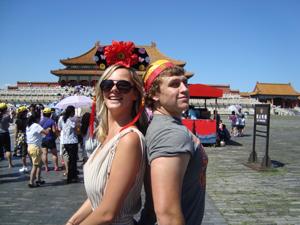 After being picked up in your hotel at about
8:00am, we will head over to the political center of the country,
Tiananmen Square. The largest public square in the world, Tiananmen
Square is seen as China's political center. Its grounds have seen some
turbulent moments, from the May 4th Movement of 1919 to the political
turmoil of 1989. The south of the square is marked by the Chairman Mao
Memorial Hall, while the center of the square is dominated by the
Monument to the People's Heroes, an imposing 10-story granite obelisk.
To the east is the National Museum of China, and to the west is the
Great Hall of the People, home to China's legislative bodies. The north
of the square is dominated by the Gate of Heavenly Peace, known for its
iconic portrait of Mao Zedong, and is the national emblem of China.
After being picked up in your hotel at about
8:00am, we will head over to the political center of the country,
Tiananmen Square. The largest public square in the world, Tiananmen
Square is seen as China's political center. Its grounds have seen some
turbulent moments, from the May 4th Movement of 1919 to the political
turmoil of 1989. The south of the square is marked by the Chairman Mao
Memorial Hall, while the center of the square is dominated by the
Monument to the People's Heroes, an imposing 10-story granite obelisk.
To the east is the National Museum of China, and to the west is the
Great Hall of the People, home to China's legislative bodies. The north
of the square is dominated by the Gate of Heavenly Peace, known for its
iconic portrait of Mao Zedong, and is the national emblem of China.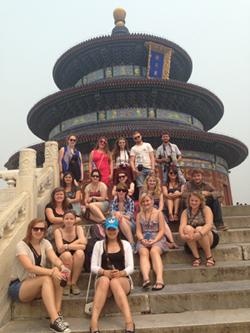
After walking across the street, we will enter what
is perhaps the greatest attraction in China, the Forbidden City. After
walking across the square we will enter the Forbidden City (known in
Chinese as Gu Gong), the largest surviving palace complex and the former
home of the emperors of the Ming and Qing Dynasty. The Forbidden City is
one of the greatest attractions in the world. Built by the third Ming
emperor between 1406-1422, the Forbidden City served as the official
residence to the Emperor of China until the last emperor, Puyi, was
forced to evacuate in 1924. The Forbidden City is divided into two
parts. The southern section, or the Outer Court was where the emperor
exercised his supreme power over the nation. The northern section, or
the Inner Court, was where he lived with his royal family. Consisting of
980 buildings and with 8,707 bays of rooms, the Forbidden City is the
best example of classical Chinese architecture in the world, and is a
wonder to behold.
 Next we will explore the Temple of Heaven park. The
complex was visited by the Emperors of the Ming and Qing dynasties for
annual ceremonies of prayer to Heaven for good harvest. The Temple of
Heaven park is best known for the Hall of Prayer for Good Harvests, an
iconic building famed for its magnificent triple-gabled circular roof.
You will also have an opportunity to walk the same imperial walkway that
the same emperors walked hundreds of years ago in their holy rites. You
will also see Beijing's senior citizens using the park grounds for
everything from tai chi and ballroom dancing to bullwhip practice!
Next we will explore the Temple of Heaven park. The
complex was visited by the Emperors of the Ming and Qing dynasties for
annual ceremonies of prayer to Heaven for good harvest. The Temple of
Heaven park is best known for the Hall of Prayer for Good Harvests, an
iconic building famed for its magnificent triple-gabled circular roof.
You will also have an opportunity to walk the same imperial walkway that
the same emperors walked hundreds of years ago in their holy rites. You
will also see Beijing's senior citizens using the park grounds for
everything from tai chi and ballroom dancing to bullwhip practice!
Following lunch we'll go to the Summer Palace.
Being northwest of the city center, the Summer Palace has the largest
royal park and being well preserved, the Summer Palace is ranked amongst
the most noted and classical gardens of the world. In 1998, UNESCO
listed it as one of the World Heritage Sites. Like most of the gardens
of Beijing, it could not elude the rampages of the Anglo-French allied
force of 1860 and was destroyed by fire. In 1888, Empress Dowager Cixi
embezzled navy funds to reconstruct it for her own benefit, changing its
name to Summer Palace (Yiheyuan). She spent most of her later years
there, dealing with state affairs and entertaining. Highlights not to be
missed are climbing Longevity Hill, viewing the Empress Dowager Cixi's
extravagant Marble Boat, and talking a walk down Suzhou jie, a canal
meant to resemble the beautiful river city of Suzhou.
After a delectable dinner featuring Beijing's
signature dish of Peking Duck, you'll be treated to a Kung Fu show. 'The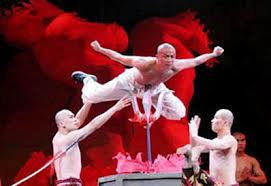 Legend of Kung Fu' is presented by China Heaven Creation International
Performing Arts Co., Ltd. ( CHC)-- China's leading performance art
production company. 'The Legend of Kung Fu' follows the story of a young
boy found wandering outside an ancient temple. Like every boy in China,
he dreams of becoming a Kung Fu master. On the road to enlightenment the
young monk encounters many difficulties and temptations. The show has
English subtitles shown above the stage to keep you informed of the
story line. The actors do not speak, and the show is all Kung Fu, dance
and acrobatics. It is the fusion of modern dance with Chinese
traditional arts, which make this performance unique and spectacular.
The best Kung Fu practitioners from all over China have been found for
this production and it shows on the stage. Their average age is just 17
years old! Additionally the costumes, set design and special effects are
up to international standards, created by some of the best stage
directors and designers in China. The show will last for about 1.5-2
hours.
Legend of Kung Fu' is presented by China Heaven Creation International
Performing Arts Co., Ltd. ( CHC)-- China's leading performance art
production company. 'The Legend of Kung Fu' follows the story of a young
boy found wandering outside an ancient temple. Like every boy in China,
he dreams of becoming a Kung Fu master. On the road to enlightenment the
young monk encounters many difficulties and temptations. The show has
English subtitles shown above the stage to keep you informed of the
story line. The actors do not speak, and the show is all Kung Fu, dance
and acrobatics. It is the fusion of modern dance with Chinese
traditional arts, which make this performance unique and spectacular.
The best Kung Fu practitioners from all over China have been found for
this production and it shows on the stage. Their average age is just 17
years old! Additionally the costumes, set design and special effects are
up to international standards, created by some of the best stage
directors and designers in China. The show will last for about 1.5-2
hours.
Following the show you'll be taken to your hotel
for the night.
Day 03: Beijing (L)
 You will be picked up from your Beijing hotel at
about 8:30am, and from there we'll make our way to the Great Wall at Mutianyu. Although it has gotten a face-lift, it avoids the army of
tourists that plague Badaling. Mutianyu offers some breathtaking views
of the valley and wall below, and if you look to your right you'll see a
large sign engraved in the side of the mountain encouraging you to
'Cherish the teachings of Chairman Mao'. Mutianyu has also become
popular for visiting foreign leaders and celebrities (former U.S.
President Clinton visited Mutianyu on one of his trips to China).
You will be picked up from your Beijing hotel at
about 8:30am, and from there we'll make our way to the Great Wall at Mutianyu. Although it has gotten a face-lift, it avoids the army of
tourists that plague Badaling. Mutianyu offers some breathtaking views
of the valley and wall below, and if you look to your right you'll see a
large sign engraved in the side of the mountain encouraging you to
'Cherish the teachings of Chairman Mao'. Mutianyu has also become
popular for visiting foreign leaders and celebrities (former U.S.
President Clinton visited Mutianyu on one of his trips to China).
You can hike down to the parking lot, take a cable
car, or take a toboggan ride (highly recommended, and lots of fun!) down
to meet our driver.
After lunch we'll make the drive to the Ming Tombs.
The Ming Tombs, about 50 km/31 miles from Beijing, are where 13
emperors of the Ming Dynasty (1368-1644) are buried. This site was
carefully chosen for its feng shui principles by the third Ming emperor
Yongle (who also moved the capital from Nanjing to Beijing and began
construction on the Forbidden City). The tomb we will visit, Dingling,
is the tomb of the Wanli Emperor. It is the only one of the Ming Dynasty
Tombs to have been excavated. It also remains the only imperial tomb to
have been excavated since the founding of the People's Republic of
China.
After viewing the tombs, we will head to the 'Shenlu',
or the Spirit Way. The Spirit Way leads into the complex, lined with
statues of guardian animals and officials, with a front gate consisting
of three-arches, painted red, and called the "Great Red Gate". The
Spirit Way, or Sacred Way, starts with a huge stone memorial archway
lying at the front of the area. Constructed in 1540, during the Ming
Dynasty, this archway is one of the biggest stone archways in China
today.
We'll then head to the northern area of Beijing, in
order to go to the Olympic Green. The Olympic Green was the center of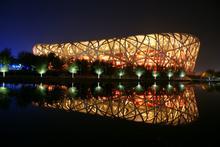 the event that captivated the world for two weeks in August of 2008, and
is where a majority of the Olympic events took place. The highlights
that you will see today include the Bird's Nest (officially known as the
Beijing National stadium) and the Water Cube (the Beijing National
Aquatics Center). The stadium gets its nickname from its outward design,
which originated from the study of Chinese ceramics, implementing steel
beams in order to hide supports for the retractable roof, thus giving
the stadium the appearance of a "Bird's nest". The Bird's Nest hosted
the Opening and Closing Ceremonies, athletic events, and football final
of the 2008 Summer Olympics, from 8 August to 24 August 2008. Since the Olympic's end, the Bird's Nest has been used to host events ranging from
opera to a ski park.
the event that captivated the world for two weeks in August of 2008, and
is where a majority of the Olympic events took place. The highlights
that you will see today include the Bird's Nest (officially known as the
Beijing National stadium) and the Water Cube (the Beijing National
Aquatics Center). The stadium gets its nickname from its outward design,
which originated from the study of Chinese ceramics, implementing steel
beams in order to hide supports for the retractable roof, thus giving
the stadium the appearance of a "Bird's nest". The Bird's Nest hosted
the Opening and Closing Ceremonies, athletic events, and football final
of the 2008 Summer Olympics, from 8 August to 24 August 2008. Since the Olympic's end, the Bird's Nest has been used to host events ranging from
opera to a ski park.
You will then be taken to your hotel for the night.
Day 04: Departure from Beijing
Private transfer from your hotel in Beijing back to your cruise or Beijing Capital
International Airport for your flight, or free activity on your own.





 You will be picked up from your Beijing hotel at
about 8:30am, and from there we'll make our way to the Great Wall at Mutianyu. Although it has gotten a face-lift, it avoids the army of
tourists that plague Badaling. Mutianyu offers some breathtaking views
of the valley and wall below, and if you look to your right you'll see a
large sign engraved in the side of the mountain encouraging you to
'Cherish the teachings of Chairman Mao'. Mutianyu has also become
popular for visiting foreign leaders and celebrities (former U.S.
President Clinton visited Mutianyu on one of his trips to China).
You will be picked up from your Beijing hotel at
about 8:30am, and from there we'll make our way to the Great Wall at Mutianyu. Although it has gotten a face-lift, it avoids the army of
tourists that plague Badaling. Mutianyu offers some breathtaking views
of the valley and wall below, and if you look to your right you'll see a
large sign engraved in the side of the mountain encouraging you to
'Cherish the teachings of Chairman Mao'. Mutianyu has also become
popular for visiting foreign leaders and celebrities (former U.S.
President Clinton visited Mutianyu on one of his trips to China).
